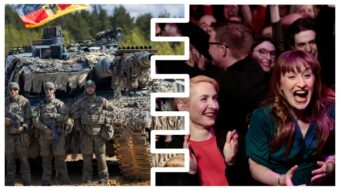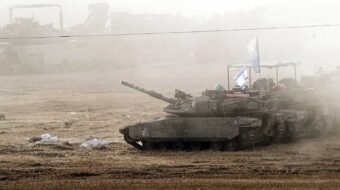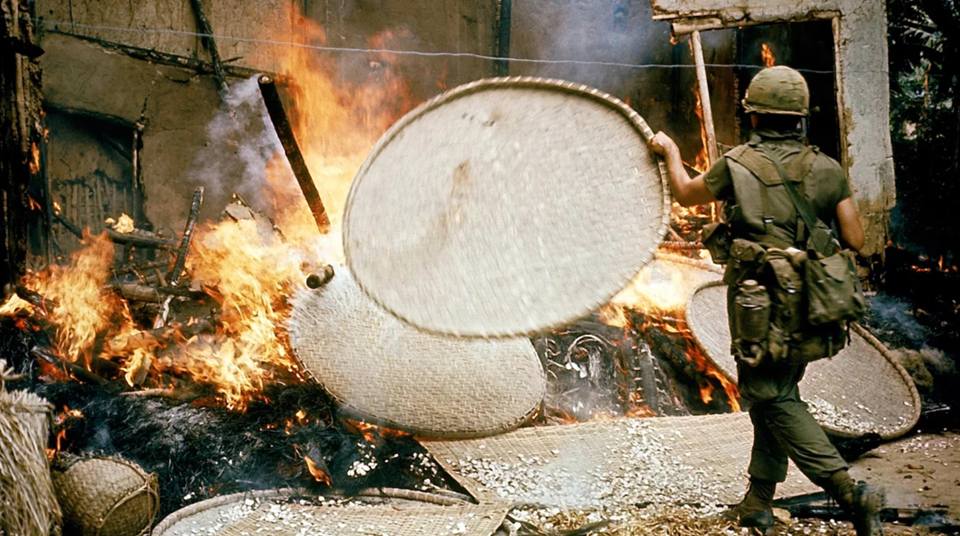
SAN FRANCISCO—A deeply moving, thought-provoking, action-inspiring My Lai Memorial Exhibit commemorating the 50th anniversary of the March 16, 1968, massacre of civilians in My Lai, Vietnam, opened in the Veterans’ Building, 401 Van Ness Ave., April 4. It will be on display there through April 11. Admission is free; hours are 11 a.m. to 7 p.m.
The display, remarkably compact for its far-reaching content, was developed by Veterans For Peace Chicago Chapter member and artist Mac MacDevitt, who is traveling with the exhibit as it is being hosted by Veterans For Peace chapters.
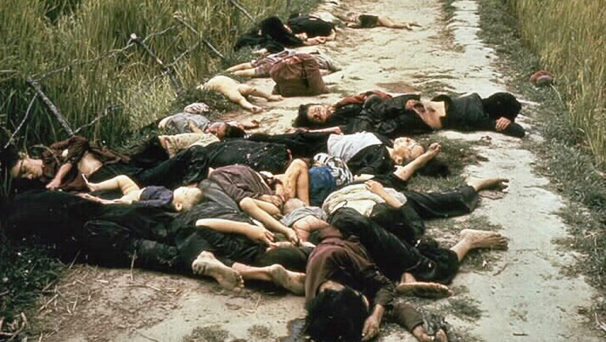
It opened in San Diego and has visited Fresno. After San Francisco, it will travel to Portland (April 21-22) and Spokane, Wash. (April 26-28) before returning to Chicago. More tours are being planned for other parts of the country.
The display starts with the massacre, which has been called “the most shocking episode of the Vietnam War,” perpetrated by U.S. Army troops on a “Search and Destroy” mission against Vietnamese National Liberation Front fighters. When the U.S. troops did not find armed opposition, they tortured and murdered some 500 unarmed villagers—women, men, children, and infants—raping and mutilating some of the women.
The exhibit then surrounds that atrocity with broadening layers of context, starting with the overall war being waged by U.S. troops and their South Vietnamese allies. Peaceful, productive village life is torn apart by the fighting and the terrible consequences for the villagers. The actions of U.S. troops range from savage slaughter to rescues of civilians—the latter bringing severe retribution from superior officers, followed by long-delayed recognition as heroic acts. The far-reaching environmental and health disasters continue to this day, from unexploded U.S. munitions, spraying of defoliants, and use of the chemical Agent Orange.
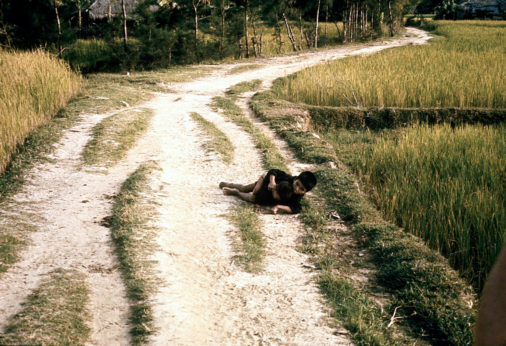
And finally, the Vietnam War, and subsequent wars including the contemporary events in Iraq and Afghanistan, are placed in the overall, ongoing context of U.S. foreign and military policy.
The heart of the display is a collage of small wooden blocks depicting U.S. flags, pictures, and other materials from the exhibit. Viewers are invited to assemble them in their own design, and to tell about their feelings in doing so.
Among the most moving panels in the display are these statements by two women survivors:
Mrs. Huynh Phuong Anh: “When we would pass through villages where [the Americans] had been, we would find only bodies—in the trees, on the ground, and women with cloth stuffed in their mouths. The people were gone, only the wounded and the dead. You can see, when the Americans came through, they killed everyone, even children, because they thought they were Viet Cong.”
Han Thi Qui: “I was wounded in the backside. At first I felt very, very hot, and later on very cold… They fired a first time into the ditch, and many men, children, and women were killed. They cried, ‘Mother.’ They were screaming. The soldiers fired three more times and finished the cries of the people. The first time there were still people screaming. They fired a second time, and the third time it was finished, all the people were killed.”
In interviews, Veterans For Peace leaders told how they got involved.
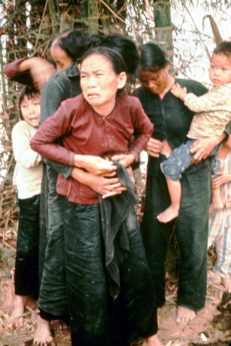
Dennis Riley, treasurer of San Francisco Veterans For Peace, said that while in Vietnam, he had worked at the Strategic Air Command’s target room. Some people knew the U.S. had made a secret deal with Thailand for bases there, but even with his high security clearance, he didn’t know the Air Force was also bombing Laos until he was assigned to the project. “There’s always this idea that it’s okay to tell people what you’re doing, and then there’s what the guys upstairs know is really okay,” he said.
When he went into the military, Riley said, “I was a young guy—I had no feeling about anything. Also, I was afraid of what would happen to me if I said I’m not going to do it. When I got out of the service, I felt really bad about what I had done, about myself—I felt that I had failed.”
Riley said he traveled across the country, “just trying to find something so I could start making up. And so I got involved working in soup kitchens…it didn’t make up for the other, but at least I was doing something good.”
MacDevitt, the exhibit’s developer, said he had sidestepped the draft during the Vietnam War by becoming a teacher. “But I always felt heartbroken about what we did in Vietnam, what we did to the people who lived there. And I was aware that we were honoring the soldiers, and talking a lot about their trauma, but we had the luxury as a country, to go to war where other people lived.”
MacDevitt said he had been experimenting with blocks and collages. When he learned the Pentagon was preparing a 50th anniversary exhibit celebrating the Vietnam War, he started work on the My Lai display, with sponsorship from the Chicago Veterans For Peace chapter, where he is an associate member.
“It’s really important,” MacDevitt said, “this whole idea of remembering and honoring the memory, and then trying to learn from it. And then how we can dialogue and connect with each other in ways that will help us make a renewed commitment to social action, social justice.”



